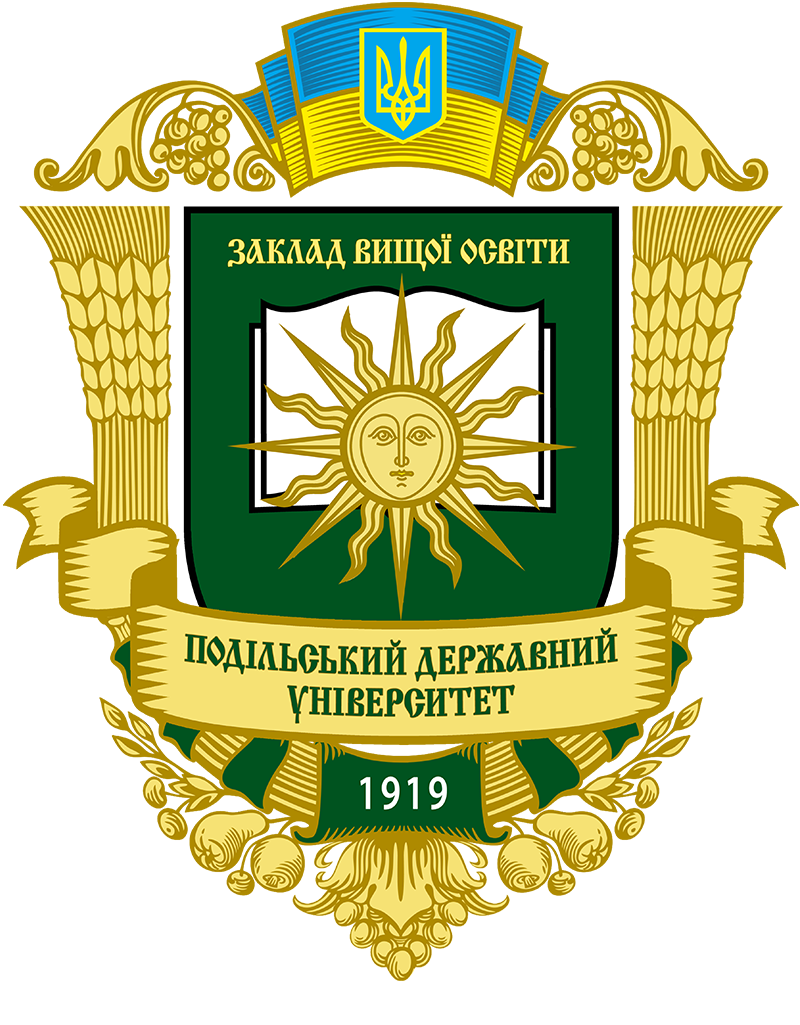INFLUENCE OF SOWING METHOD ON THE FORMATION OF SOYBEAN SEED QUALITY
DOI:
https://doi.org/10.37406/2706-9052-2025-3.15Keywords:
soybean, variety, seeds, row spacing, crude protein content, fat content, collection of crude protein and fat per unit areaAbstract
Purpose. To study the influence of the sowing method with different row spacings (15, 30, 45 cm) on the formation of seed quality, in particular the content and yield per unit area of crude protein and fat, of different soybean varieties: Titan, Pallada, Kobuko, selected by the Institute of Feed and Agriculture of the Podillia NAAS on gray forest soils in the conditions of the Right-Bank Forest- Steppe. Methods. System method, determination of crude protein content by the Kjeldahl method (DSTU 7169:2010), determination of fat in Soxhlet apparatuses by extraction method (DSTU 7577:2014), mathematical and statistical method. Results. During 2022–2024, the reaction of soybean varieties Titan, Pallada, and Kobuko to the sowing method with different row spacings: 15, 30, 45 cm was established. It was found that the row spacing affected the content and yield of crude protein and fat in soybean seeds. In the Titan and Kobuko varieties, the maximum content of crude protein (40,0 and 40,9%) and fat (20,8 and 20,4%) was observed when sowing in rows with a row spacing of 15 cm, while in the Pallada variety, the maximum content of crude protein (41,5%) and fat (20,1%) was observed when sowing in rows with a row spacing of 30 cm. A similar relationship was established with the yield of crude protein and fat per unit area. In the Titan and Kobuko soybean varieties, the highest yield of crude protein (1,34 and 1,25 t/ha) and fat (0,69 and 0,62 t/ha) was formed when sowing with a row spacing of 15 cm, in the Pallada variety (respectively, 1,30 and 0,63 t/ha) – when sowing with a row spacing of 30 cm. Conclusions. Thus, the content and yield of crude protein in soybean seeds of the Titan, Pallada and Kobuko varieties significantly depend on the sowing method or row spacing. Based on the correlation analysis, medium-strength inverse relationships were established between the content of crude protein (r = −0,555), fat (r = −0,601) and the sowing method; between the collection of crude protein (r = −0,721), fat (r = −0,700) and the sowing method, strong inverse relationships were established. It should be noted that strong positive relationships were established between the content of crude protein and fat in soybean seeds (r = 0,917 in the Titan variety; r = 0,842 in the Pallada variety; r = 0,996 in the Kobuko variety). Such correlation coefficient indicators confirm that sowing of the Titan and Kobuko soybean varieties with row spacings of 15 creates optimal conditions for the formation of maximum indicators of both crude protein and fat content, and in the Pallada variety such conditions were created when sowing with a row spacing of 30 cm.
References
Бабич А.О. Селекція, виробництво, торгівля і використання сої у світі. Київ : Аграрна наука, 2011. 548 с.
Білявська Л.Г., Рибальченко А.М. Мінливість господарсько цінних ознак сої в умовах Лівобережного Лісостепу України. Вісник Полтавської державної аграрної академії. 2019. № 1. С. 65–72. DOI: 10.31210/visnyk2019.01.08.
Господаренко Г.М., Любич В.В., Бомко С.М. Формування врожаю сої залежно від складових агротехнології. Київ : ТОВ «ТРОПЕА», 2021. 184 с.
Основи наукових досліджень в агрономії / В.О. Єщенко та ін. ; за ред. В.О. Єщенка. Київ : Дія, 2005. 288 с.
Кобак С.Я., Чорна В.М., Головенько Ю.О. Вплив ретардантів на формування врожайності насіння сої. Корми і кормовиробництво. Вінниця, 2024. № 97. С. 40–50. DOI: 10.31073/kormovyrobnytstvo202497-04.
Петриченко В.Ф. Наукові основи виробництва і використання сої у тваринництві. Корми і кормовиробництво. Вінниця, 2012. Вип. 71. С. 3–11.
Петриченко В.Ф., Лихочвор В.В., Іванюк С.В. Соя : монографія. Вінниця : Діло, 2016. 400 с.
Петриченко В.Ф., Кобак С.Я., Чорна В.М., Колісник С.І., Лихочвор В.В., Пида С.В. Формування азотфіксувального потенціалу та продуктивності сортів сої селекції Інституту кормів та сільського господарства Поділля НААН. Мікробіологічний журнал. 2018. № 80 (5). С. 63–75. URL: http://jnas.nbuv.gov.ua/article/UJRN-0000938155.
Петриченко В.Ф., Лихочвор В.В., Колісник С.І., Воронецька І.С., Кобак С.Я. Обґрунтування інтенсифікації виробництва зернобобових культур в Україні. International academy journal WEB of SCHOLAR. 2018. № 6 (24). Vol. 4. P. 22–29.
Кобак С.Я., Чорна В.М. Формування врожайності та якості насіння сої за дії інокуляції та ретарданту : монографія. Вінниця : ФОП Рогальська І.О., 2018. 212 с.
Чорнолата Л.П. Кормова цінність протеїну та жиру насіння сої. Сучасне тваринництво. Агробізнес сьогодні. 2018. URL: http://agro-business.com.ua/agro/suchasnetvarynnytstvo/item/11332-kormova-tsinnist-proteinu-ta-zhyru-nasinnia-soi.html.
Шепілова Т.П., Петренко Д.І. Вплив способу сівби і норми висіву насіння на ріст і розвиток рослин сої. Вісник Уманського національного університету садівництва. 2017. №. 1. С. 74–77.
Briguglio M., Eyherabide G., Liiquez J. Variability in unitz tripsin inhibitor contents and activity in Argentinian soybean cultivars. Developing a Global Soy Blueprint for a Safe Secure and Substainable Supplu : VIII World Soybean conference research. Beijng, China, 2009. August. P. 10–15.
Petrychenko V., Kobak S., Kolisnyk S., Chorna V., Korniychuk O., Pantsyrev O. Agroecological Assessment of Soybean Varieties in the Conditions of the Right Bank Forest Steppe of Ukraine. Journal of Ecological Engineering. 2024. Vol. 25. № 9. P. 60–69. DOI: 10.12911/22998993/190492.
Temperly R.J., Borges R. Tillage and crop rotation impact on soybean grain yield and composition. Agron. J. 2006. Vol. 98. Р. 999–1004.
Tomas J.M.G., Boote K.J., Allen L.H., Gallo-Meagher M., Davis J.M. Elevated temperature and carbon dioxide effects on soybean seed composition and transcript abundance. Crop Sci. 2003. Vol. 43. Р. 1548–1557.











